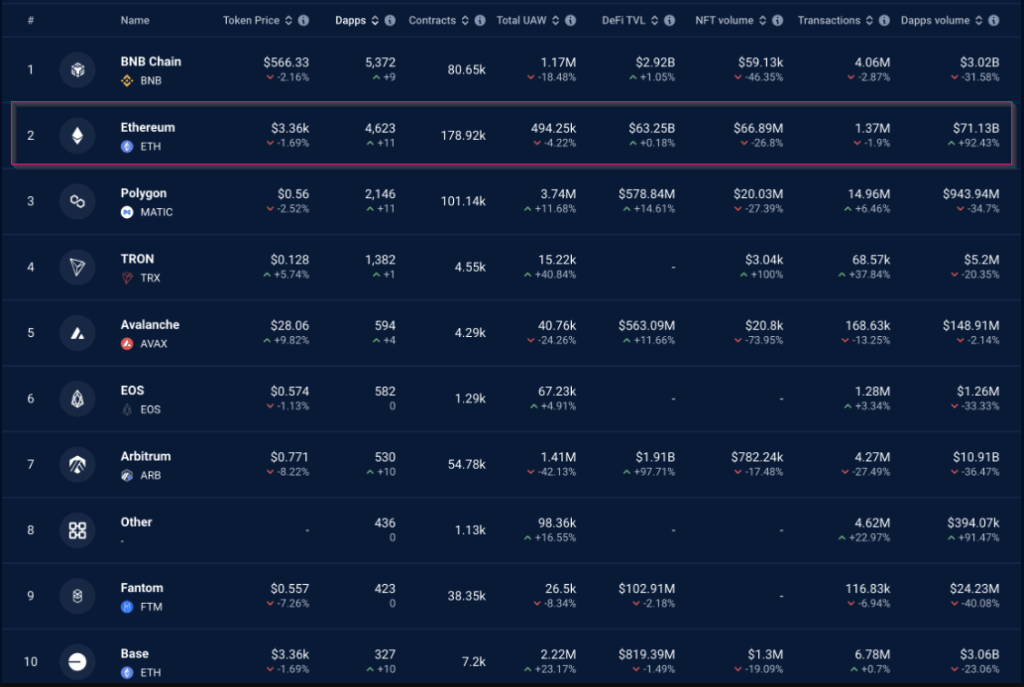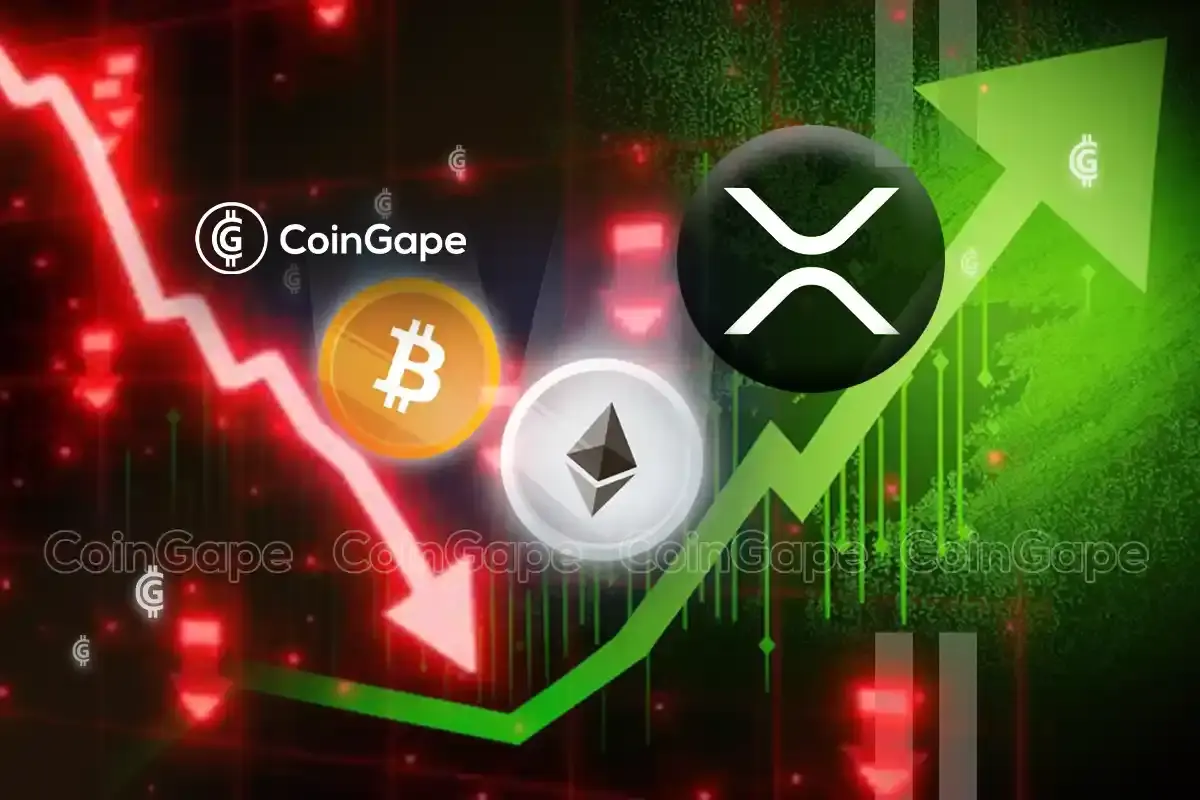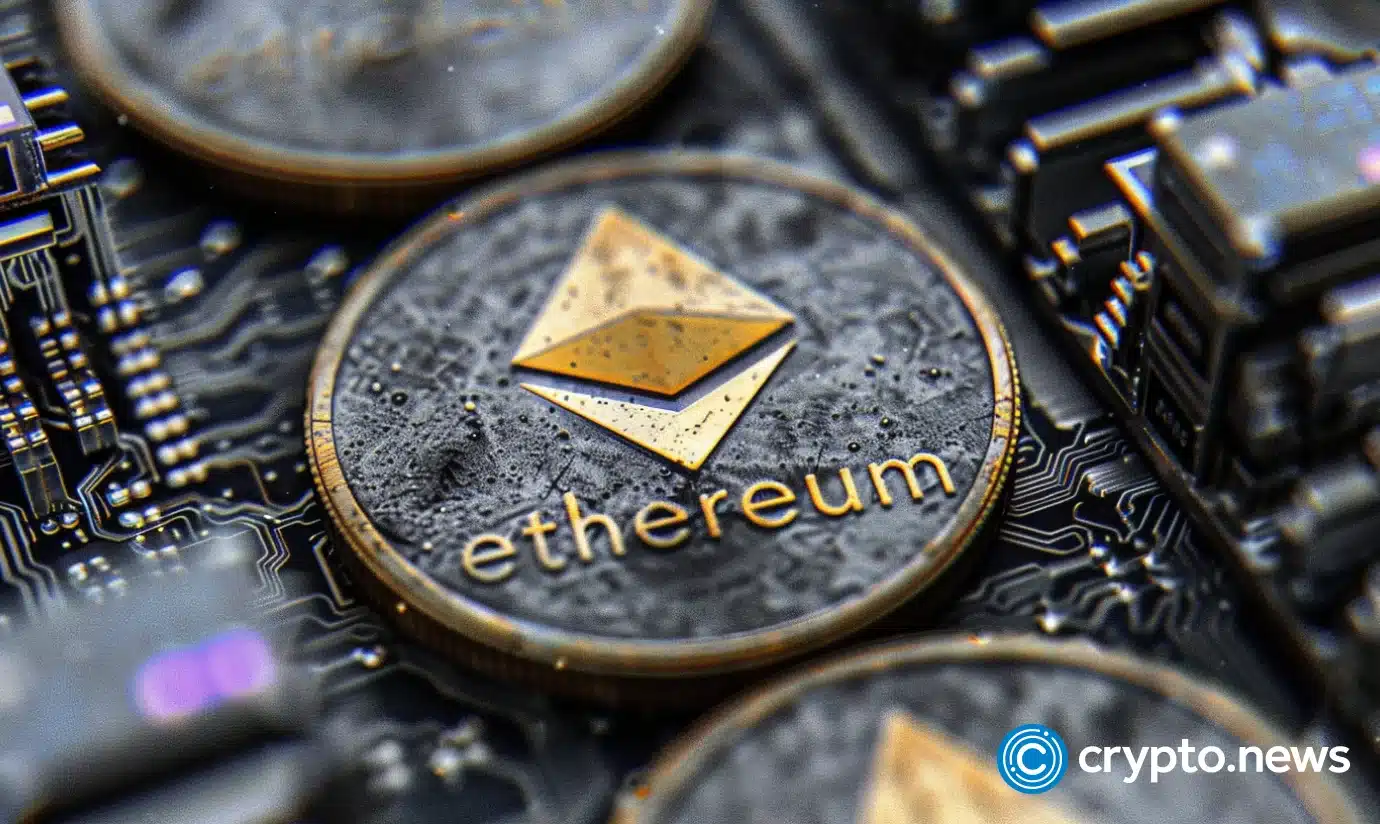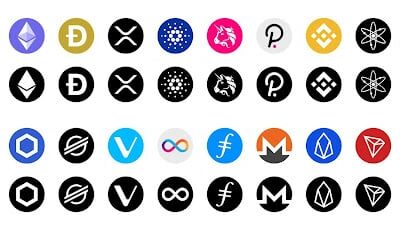Ethereum
Ethereum needs competition

As I never tire of pointing out in meetings, there is nothing you can do with blockchain that you can’t do faster and more cheaply with traditional centralized IT infrastructure. Although blockchains have generated some very exciting new approaches to products and services, including tokenization and smart contracts, they can all be replicated in a centralized system. The essential and irreducible value proposition of a blockchain is true decentralization. Everything else is optional.
For business users, I believe the value proposition is tied to a well-founded fear of the power of centralized market operators and the path they typically take from helpful utility to predatory monopoly. This is why private blockchains remain such a stupid idea. The theater of decentralization does not change the fact that the operator of the system is only a potential future predatory monopolist.
Paul Brody is EY’s global blockchain leader and a CoinDesk columnist.
From ridesharing to consumer products, the history of the digital economy over the past decade has been marked by the rise of these near-unshakable so-called digital monopolies. Along the way, some of these companies may have increased the share they take of the transactions executed on their networks. This typically happens when a market’s value proposition shifts from “it’s a better system” to “it’s just a bigger system” and finally to “it’s the only system with efficient scale to reach your customers or suppliers.
Although the world of Web2 is still (historically speaking) new, it is not a new problem and we have already solved it, not with decentralization but with regulation. In 1895, there were approximately 6,000 local telephone companies in the United States. Each company could set its own tariffs and had to conclude agreements with each other for interconnection. Much like the so-called digital monopolies of today, the big ones have grown in size. Eventually, only one dominant player remained, AT&T, the eventual successor to the American Telephone Company founded by Alexander Graham Bell and his father-in-law in 1885.
In order to “regulate” AT&T and create a level playing field for competitive small businesses in the telecommunications industry, the Communications Act of 1934 decreed that telephone service was a public utility and that participants in the business were public operators. To be designated a common carrier, a company had to offer its products and services to all members of the public on equal terms, including interconnection. In this world, the operator with the largest network could not exclude smaller players or charge them high fees to connect calls from one network to another.
Imagine if public operator rules were applied to private blockchains, supplemented by mandatory interconnection rules and fees. In this world, any user of any private blockchain could interconnect and transact with any other user or any other private blockchain. Regardless of chain size, larger operators would not be able to attract market share simply by being bigger. They should be better. Maybe it means faster, more secure, or more reliable.
There are great attractions for this type of approach. Most importantly, in many ways it can produce a much more competitive and vibrant market. Centralized private blockchain operators would compete to be the best. The downside is that the nature of this competition is limited. For a token or smart contract to be interconnected from one private chain to another, they must be fundamentally the same or so similar that they are indistinguishable in most cases. Just as ISPs are largely reduced to competing on speed and price, the nature of competition between public operators tends to be quite limited.
In 1984, the Bell System was split into a series of regulated regional carriers, separated from the long-distance telephone calling business. Subscribers paid monthly fees for access and local calls, and long distance calls were billed by the minute. Consumers and businesses could choose any long-distance provider they wanted, all of which had equal access to the local telephone network through common carrier rules. The result was a competitive transformation that lowered the cost of long distance calls by 40% in a decade. Eventually, the precipitous fall in networking and computing costs brought these costs close to zero, where they have remained ever since.
Why is all this important? Because warm, friendly, community-centric Ethereum may not be far from becoming a global digital commerce monopoly. Ethereum is already far more valuable than any other blockchain ecosystem and has the most developers and users. This makes it increasingly difficult for viable competitors to emerge, no matter how good they are. Over time, the power of this network will only grow.
Ethereum is unlikely to become a predatory monopoly, raising fees and stifling users. I also don’t foresee the Ethereum Foundation commissioning a large headquarters tower in New York anytime soon. However, regardless of good intentions and how democratic governance may be, lack of competition can shape culture and behavior. Complacency and complacency could ultimately be just as detrimental to the pace of innovation.
Having competition around your neck is good for all organizations, even nonprofits. Regulation of public operators could transform the world of private blockchains from irrelevant to competitive overnight. As good as Ethereum is, serious and continued competition would make it better and keep it that way.
Ethereum
Cryptocurrency liquidations surpass $200 million as Ethereum and Bitcoin plummet

Cryptocurrency market liquidations hit their highest level in a week on Wednesday as the price of Bitcoin fell below $60,000.
Over the past 24 hours, over 74,000 traders have been liquidated for $208 million, CoinGlass the data shows it.
The majority of those losses, about $184 million, went to investors holding long positions who had bet on a price rise.
The largest liquidations hit Ethereum investors, at $55.5 million, almost entirely on long positions, the data showed.
Current issues surrounding US monetary policy, geopolitical tensions, and the upcoming US presidential election in November are expected to impact the price of the leading cryptocurrency throughout 2024.
Bitcoin abandoned The stock price fell from $62,200 to $59,425 intraday. The asset has since recovered its losses above $60,200, but is still down 3% over the past 24 hours.
Solana, the world’s fifth-largest cryptocurrency by market capitalization, was the worst hit among the top 10 cryptocurrencies, down about 8% to $140. Solana had been riding high on New York investment management firm VanEck’s filing of its Solana Trust exchange-traded fund late last month.
Major cryptocurrencies have been falling over the past month. Ethereum has fallen more than 12% over 30 days despite growing interest in the launch of Ethereum spot ETFs.
Some analysts predict that new financial products could begin marketing in mid-Julywith at least one company predicting that the price of ETH will then take offBitcoin is down 12% over the same period.
Certainly, analysts always see further price increases this yearThe current market cooling represents a precursor to another major price surge in the coming months, Decrypt reported Monday.
On Wednesday, analytics firm CryptoQuant released a report examining Bitcoin Mining Metrics and highlighted the conditions for a return of prices to current levels.
Edited by Sebastian Sinclair.
Ethereum
Volume up 90%: good for ETH price?

Ethereum (ETH) has emerged as a beacon in the sea of blockchains, with a staggering 92% increase in decentralized application (dApp) volume over the past week. But the news comes with a layer of complexity, revealing a landscape of both opportunity and potential setbacks for the leading blockchain.
Cheap gas fuels the fire
Analysts attribute the explosion in decentralized application volume to the Dencun upgrade in March, which significantly reduced gas costs – the cost associated with processing transactions on the Ethereum network.
Lower transaction fees have always attracted users, and this recent development seems to be no exception. The surge in activity suggests a revitalized Ethereum that is likely to attract new projects and foster a more vibrant dApp ecosystem.
NFT craze drives numbers up
While overall dApp volume (see chart below) paints a positive picture, a closer look reveals a more nuanced story. This surge appears to be driven primarily by an increase in NFT (non-fungible token) trading and staking activity.
 Source: DappRadar
Source: DappRadar
Apps like Blur and Uniswap’s NFT aggregator have seen significant surges, highlighting the rise of the NFT market on Ethereum. This trend indicates a thriving niche in the Ethereum dApp landscape, but raises questions about the platform’s diversification beyond NFTs.
A look at user engagement
A curious problem emerges when looking at user engagement metrics. Despite the impressive increase in volume, the number of unique active wallets (UAWs) on the Ethereum network has actually decreased.
Ethereum is now trading at $3,316. Chart: TradingView
This disconnect suggests that current activity could be driven by a smaller, more active user base. While high volume is certainly a positive indicator, seeing broader user participation is essential to ensuring the sustainability of the dApp ecosystem.
A glimmer of hope ?
A positive long-term indicator for Ethereum is the trend of decreasing holdings on the exchange, as reported by Glass nodeThis suggests that ETH holders are moving their assets off exchanges, potentially reducing selling pressure and contributing to price stability.
If this trend continues, ETH could potentially target $4,000 this quarter or even surpass its all-time high. However, this price prediction remains speculative and depends on various market forces.
 Ether price expected to rise in coming weeks. Source: CoinCodex
Ether price expected to rise in coming weeks. Source: CoinCodex
Ethereum at a Crossroads
Ethereum is at a crossroads. Dencun Upgrade has clearly revitalized dApp activity, particularly in the NFT space. However, uneven dApp performance and the decline of the UAW are raising concerns about the long-term sustainability of this growth. Network growth, measured by the number of new addresses joining the network, is also slowing, according to Santiment, which could potentially hamper wider adoption.
The short-term price outlook for ETH remains uncertain. While long-term indicators, such as declining exchange holdings, suggest potential for price appreciation, slowing network growth could lead to a price decline in the short term.
Look forward to
The coming months will be crucial for Ethereum. The platform must capitalize on the renewed interest in dApps by attracting a broader user base and fostering a more diverse dApp ecosystem beyond NFTs. Addressing scalability issues and ensuring user-friendly interfaces will also be essential to sustain growth.
If Ethereum can overcome these challenges, it has the potential to cement its position as the premier platform for decentralized applications. However, if it fails to adapt, other waiting blockchains could capitalize on its shortcomings.
Featured image from Pexels, chart from TradingView
Ethereum
Ethereum, Bitcoin, and XRP Behind $1.5 Billion Losses in Cryptocurrency Scams

The first half of 2024 has seen a surge in major hacks in the cryptocurrency sector. Ethereum (ETH)Bitcoin (BTC) and XRP have resulted in losses of over $1.5 billion due to cryptocurrency scams. This year, over 200 major incidents have resulted in losses of approximately $1.56 billion.
Cryptocurrency Scam Losses Reach $1.5 Billion
According to data from Peck Shield Alert, only $319 million in lost crypto funds have been recovered. Furthermore, this year’s losses represent a staggering 293% increase over the same period in 2023, when losses totaled $480 million.
Overview of Cryptocurrency Scams in 2024, Source: PeckShieldAlert | X
Additionally, DeFi protocols have been the top targets for hackers, accounting for 59% of the total value stolen. More than 20 public chains have suffered major hacks during this period. Additionally, Ethereum, Bitcoin, and XRP top the list for the amount lost via cryptocurrency hacks.
Additionally, Ethereum and BNB Chain were the most frequently targeted, each accounting for 31.3% of the total hacks. Meanwhile, Arbitrum followed with 12.5% of the attacks. One of the most significant incidents occurred on June 3, 2024.
Bitcoin DMMa major Japanese cryptocurrency exchange, reported a major breach. Attackers stole 4,502.9 BTC, worth over $300 million at the time. The incident highlighted the vulnerabilities of exchanges, especially those that handle large volumes of digital assets.
Read also : XRP News: Whale Moves 63 Million Coins as Ripple Strengthens Its Case
Major XRP, ETH and BTC hacks
A week after the DMM Bitcoin attack on June 10, UwU Loana decentralized finance (DeFi) lending protocol, was compromised. The breach resulted in a loss of approximately $19.3 million in digital assets. The hack underscores the ongoing risks associated with DeFi platforms, which often operate with less regulatory oversight. The platform later offered a $5 million reward to catch the hacker.
Earlier this year, on February 3, 2024, Ripple co-founder Chris Larsen confirmed a major security breach involving his personal wallets. Initially, rumors circulated that Ripple itself was targeted. However, Larsen clarified that the hack involved his digital wallets and not Ripple’s corporate assets.
The hackers managed to transfer 213 million XRP tokens, worth approximately $112.5 million. Additionally, on-chain detective ZachXBT first alerted the community about the suspicious transactions. In response to the theft, Larsen and various cryptocurrency exchanges took swift action to mitigate the impact.
Several exchanges, including MEXC, Gate, Binance, Kraken, OKX, HTX, and HitBTC, collaborated to freeze a significant portion of the stolen funds. Binance alone froze $4.2 million worth of XRP to aid in the investigation.
Additionally, on April 2, 2024, FixedFloat, a Bitcoin Lightning-based exchange, experienced a security breach. Unauthorized transactions resulted in financial losses exceeding $3 million. This incident highlighted ongoing security issues for FixedFloat, following a similar breach earlier in the year.
The company has also faced significant challenges securing its platform against repeated attacks. Additionally, in February, hackers stole $26 million worth of Ethereum and Bitcoin from FixedFloat. These digital assets were then transferred to exchanges for profit.
Read also : Ethereum Doubles Bitcoin’s Network Fee Revenue, Thanks to Layer-2
Ethereum
Ethereum’s Year-Over-Year Revenue Tops Charts, Hitting $2.7 Billion

Ethereum blockchain has been in first place for a year incomesurpassing all major blockchains.
According to data provided by Lookonchain, Ethereum generated $2.72 billion in annual revenue, surpassing the Bitcoin network by a margin of $1.42 billion. The data shows that Bitcoin accumulated $1.3 billion in revenue over the same period.
Defi Llama Data watch that Ethereum is still the leader in decentralized finance (challenge) with a total value locked (TVL) of $58.4 billion, or 60.9% of the entire market. The blockchain recorded a 30-day fee revenue of $131 million, according to the data aggregator.
Bitcoin’s TVL is currently set at $1 billion.
The network of the second largest cryptocurrency, ETH, witness a 155% year-over-year increase in its fee revenue in the first quarter of this year, as the cryptocurrency market saw a bullish trend.
Tron comes in third with annual revenue of $459 million. Solana and BSC also recorded nine-figure revenues of $241 million and $176 million, respectively.
Notably, Tron is the second largest chain in the challenge scene with a TVL of $7.7 billion. BSC and Solana take third and fourth place with TVLs of $4.8 billion and $4.5 billion, according to Defi Llama.
Avalanche, zkSync Era, Optimism and Polygon reached the top 10 with $68 million, $59 million, $40 million and $23 million in year-over-year revenue, respectively.
-

 Videos9 months ago
Videos9 months agoBitcoin Price AFTER Halving REVEALED! What’s next?
-

 Bitcoin8 months ago
Bitcoin8 months agoBitcoin Could Test Record Highs Next Week in ETF Flows, Says Analyst; Coinbase appears in the update
-

 Videos9 months ago
Videos9 months agoAre cryptocurrencies in trouble? Bitcoin Insider Reveals “What’s Next?”
-

 Videos9 months ago
Videos9 months agoCryptocurrency Crash Caused by THIS…
-

 Videos8 months ago
Videos8 months agoThe REAL reason why cryptocurrency is going up!
-

 Altcoin8 months ago
Altcoin8 months agoThe best Altcoins to buy before they rise
-

 Videos9 months ago
Videos9 months agoBlackRock Will Send Bitcoin to $116,000 in the Next 51 Days (XRP News)
-

 Videos9 months ago
Videos9 months agoDonald Trump: I like Bitcoin now! Joe Biden HATES cryptocurrencies.
-

 Videos8 months ago
Videos8 months agoSolana Cryptocurrencies: the future WILL SHOCK you | What comes next?
-

 News9 months ago
News9 months agoTON, AKT, AR expect increases of 15%+ as the market stabilizes
-

 Videos8 months ago
Videos8 months agoBitcoin Whale REVEALS: The 5 Best Coins to Make You a Millionaire!
-

 Videos8 months ago
Videos8 months agoBREAKING NEWS: The 19 best cryptocurrencies ready to skyrocket!












